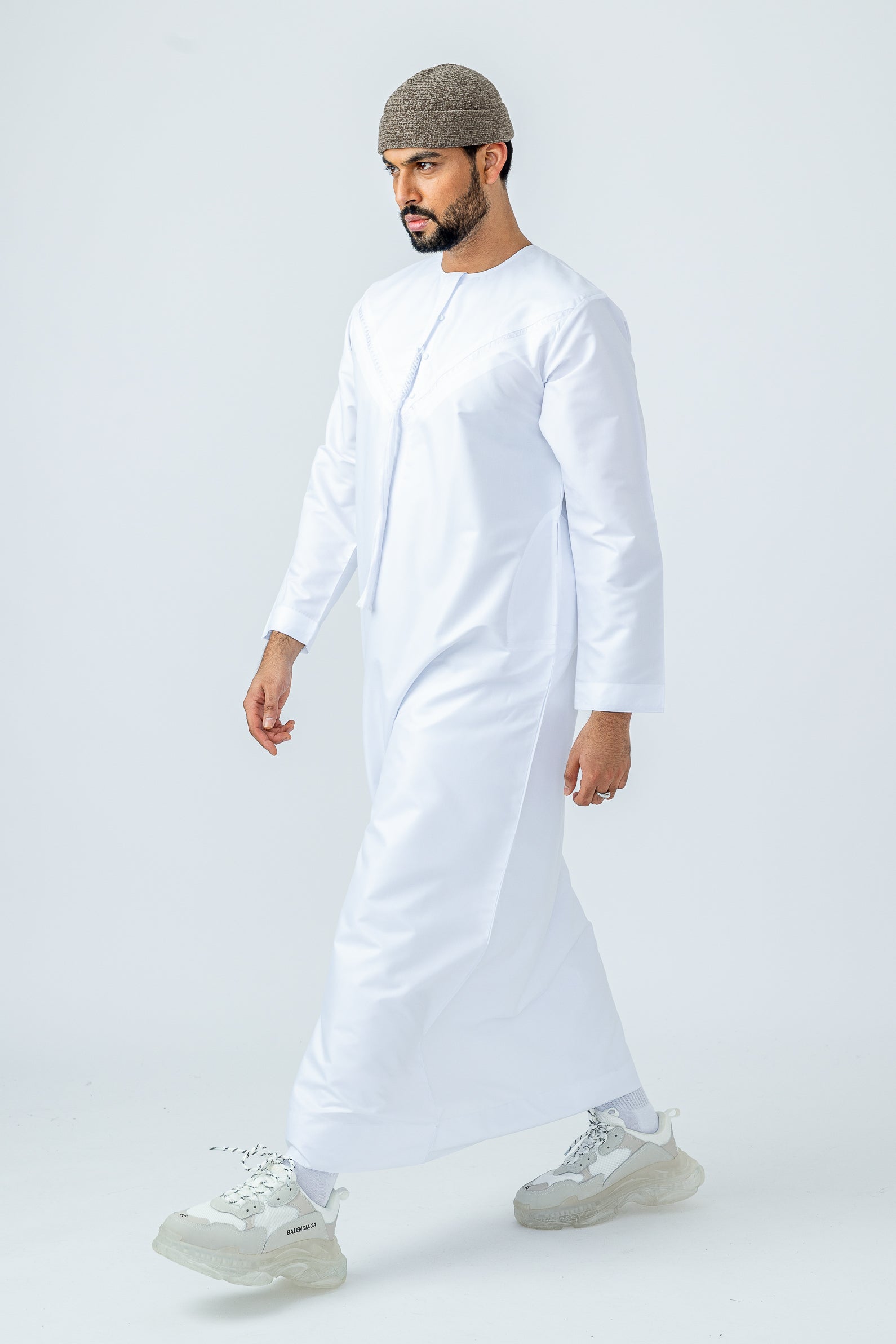
The Emirati Thobe, also known as the traditional Emirati dress, is not just a piece of clothing; it is a symbol of the rich heritage and culture of the United Arab Emirates. This garment has a long history, dating back to ancient times, and has evolved and adapted over the years to reflect the changing times and influences.
The Thobe has been an integral part of Emirati culture for centuries. It is a simple and loose-fitting garment, usually made from white fabric, which helps to keep the wearer cool in the hot desert climate. The design of the Thobe has remained relatively unchanged over the years, with slight variations in the cut and embroidery depending on the region or tribe.
Traditionally, the Emirati Thobe was worn by both men and women. However, with the influence of Western culture and the modernization of society, it has become more common for men to wear the Thobe, while women now tend to wear modern clothing. Nevertheless, the Thobe still holds a special place in Emirati culture, and it is often seen on ceremonial occasions, such as weddings and national holidays.
The Thobe is not just a piece of clothing; it is a symbol of Emirati identity. The white color represents purity and simplicity, while the loose-fitting design reflects the modesty and humility of Emirati culture. The Thobe also reflects the Bedouin heritage of the UAE, as it was traditionally worn by Bedouin nomads who roamed the desert in search of water and grazing land for their livestock.
Over the years, the Thobe has evolved to incorporate influences from other cultures and regions. For example, the embroidered patterns on the Thobe often feature intricate designs inspired by Indian and Persian art. These designs are usually hand-stitched using colorful threads, adding a touch of vibrancy to the otherwise plain white garment.
Today, the Thobe is not only worn for traditional and ceremonial occasions, but it has also become a fashion statement. Many designers and fashion brands have started incorporating the Thobe into their collections, creating modern and stylish adaptations of this traditional garment. These modern Thobes often feature embellishments, such as sequins and crystals, and are made from luxurious fabrics such as silk and satin.
Despite these modern adaptations, the Thobe remains a symbol of national pride and cultural heritage in the UAE. It is a testament to the resilience and adaptability of Emirati culture, which has managed to preserve its traditions and customs amidst the rapid pace of modernization.
In conclusion, the Emirati Thobe is not just a piece of clothing; it is a journey through time and culture. It reflects the rich history and heritage of the United Arab Emirates, while also adapting to the changing times and influences. Whether it is worn for traditional or fashionable purposes, the Thobe remains a symbol of Emirati identity and national pride.